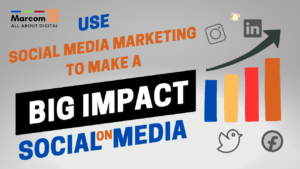In this blog, we’re going to talk about the three major e-commerce website platforms – Magento, Shopify & BigCommerce.
Probably if you’re an e-commerce business you probably fall into one of these two buckets: you’ve built your business on retail and you’re looking to now grow your business online or you are already an online business and sell all of your products or most of your products on the Internet.
Well, I’m going to talk about all the three of the main platforms that you’re probably going to want to think about using now.
This blog is intended to be a general overview of pros and cons and the major platforms that you can use. There are other ones that say that they are e-commerce. They have e-commerce capabilities, but they don’t really compare to these three, in terms of robustness, stability and scalability.
So let’s talk about the first one i.e. Shopify.
I’m going to go through the pros and cons of each of them and who probably like types of business each platform would be right for. Shopify probably is the most popular one and there’s a reason it’s the most popular.
It’s because it’s the easiest platform to start a small out of your garage side hustle business. It is super easy to start. It’s just a little bit harder than maybe opening a Gmail account another benefit or a pro is that has some of the most beautiful themes out there meaning you can make your website look, fantastic just by buying a theme off of a Shopify designer or developer and there’s thousands probably millions of them to choose from so you can really make your website your own individual website.
Let’s dive-in into some other benefits of Shopify. It comes with a built-in blog so you can get your blog right away. That’s great for SEO. That’s another benefit of Shopify.

It’s relatively low cost. Although they do take a percentage to assess any money coming in any time somebody buys your product, they’ll take a percentage of that. So merchant fees is there, but generally super easy to use.
It’s what I would recommend to anybody starting a new business from scratch without a lot
of funding; with zero technical knowledge – Shopify is the place to go and there’s even some big businesses built on Shopify. MGMT, for instance, is a watch company. They currently use Shopify.
Well, there are a few downsides too. The first one is that as you start to grow you start to have limitations with regards to the customization of the platform. So there’s limitations on the number of products that you can list.
There’s limitations on the customization between the apps or the plugins that you’re using to operate your business. Things like cart abandonment, retargeting, website pop-ups and rewards programs, you know website credit things like that that becomes major limitation as you start to grow your business into the $500-600K in revenue and beyond.
However, Shopify does have an enterprise-level version called Shopify Plus that comes in to help larger businesses customize their customers web experience their user experience because they have an API that you can tap into there’s just more customization that you can
use but it’s also more expensive starts at about $2,000 or 2,500 a month just to use Shopify plus.
One more downside of Shopify is that you have to buy several plugins to build your e-commerce engine. Some plug-ins come free of cost. But as you want to grow your machine and really start to integrate the full-scale ecommerce funnel, you have to buy plugins from their app Marketplace and that can get pretty expensive.
Plugins range anywhere from twenty bucks all the way up to a hundred plus and a lot of times these are monthly membership. So you can be paying you can be shelling out a lot of money just for plug-ins.
It’s now I want to talk about the next platform is BigCommerce!

BigCommerce is another relatively popular platform and it’s kind of the middle between Shopify and the third one.
I’m going to talk about Magento and the reason it’s sort of in the middle and I don’t mean middle and ranking. I mean middle in its features. It doesn’t have quite as beautiful themes as Shopify.
If you use a Bigcommerce theme, it’s like less likely to look like a lot of other websites out there. So you’re going to need somebody with coding and designing knowledge to create custom site in order to really set yourself apart.
But BigCommerce does come out of the box with more capabilities than Shopify without buying the plugins that you have to buy in Shopify. So BigCommerce just comes out of the box with a ton of capabilities that are ready to build your e-commerce engine.
So as you’re scaling up past five hundred thousand dollars, you really want a lot of customization and you would want to list more products — BigCommerce is probably going to be a little bit better for you.
Then the third one is super popular. I believe it is used by more companies than both of the first two combined. There’s a reason for that and that it’s highly flexible.
You can literally build whatever you want out of Magento. So, a lot of technical teams and developers love Magento because there’s not a lot of limitation but the limitations that the first two don’t have.
First off, the cost. The cost to use Magento is more expensive $500-700 a month is probably the average range. The other limitation to Magento is that it doesn’t have built-in hosting. So, you have to use a third party hosting provider to just build your website whereas Shopify, BigCommerce come with built-in hosting services. They have built-in hosting into the membership.
So if you’re just starting out Shopify is a no-brainer but if you have a budget and you have a development team, and you’re ready to grow fast BigCommerce is probably going to be your go to framework and it will also allow you to scale up pretty fast Magento!
It’s probably better if you have a technical team either on staff or an agency that is ready to do some crazy customizations right away. You want to grow fast or you already have a retail built business that you want to automatically integrate all of your functionalities and all of your products into Magento immediately with super custom features – Magento is probably the better fit for you.
Although BigCommerce really does compete with them, you know on a lot of these features
and things so that’s just a super general overview of the three most popular platforms.
Let me quickly mention a few other ones out there just so you know, they are out there. WordPress, for instance, has platform called WooCommerce. I didn’t really mention that one because it has a lot of glitches and it has a lot of shortcomings.
It doesn’t work quite as well and it’s harder to scale another. I’m sure there’s plenty of you out there that are going to argue and say it’s all it’s out of the box and all it’s easy to use. There’s just some small things in security, some small glitches that you just have to understand and know in order to make WooCommerce work for you.
Let me know your thoughts and if you require any assistance with your e-commerce business plans, do not hesitate to contact us via the below contact form.
Have a great day!










